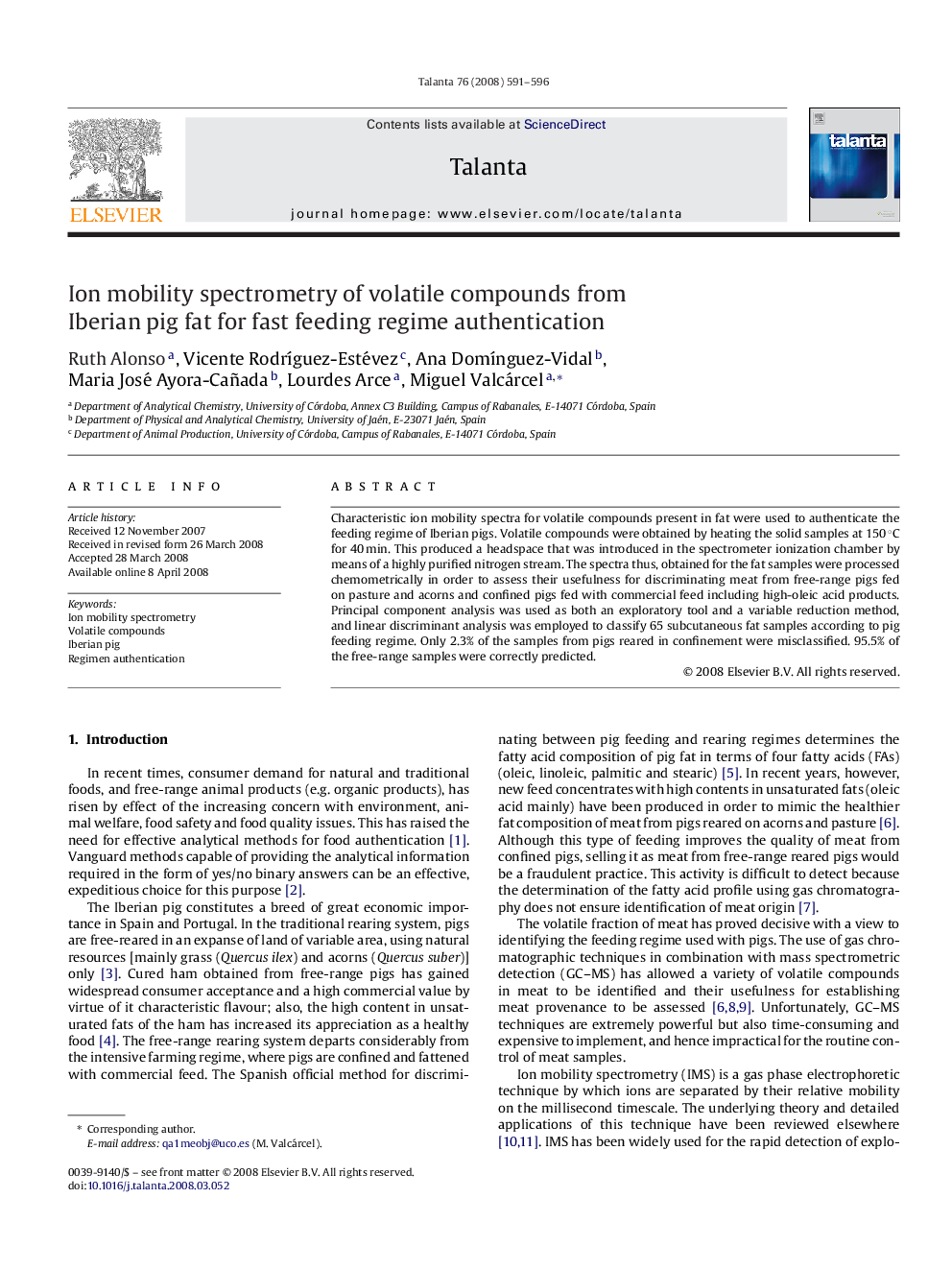| Article ID | Journal | Published Year | Pages | File Type |
|---|---|---|---|---|
| 1243528 | Talanta | 2008 | 6 Pages |
Characteristic ion mobility spectra for volatile compounds present in fat were used to authenticate the feeding regime of Iberian pigs. Volatile compounds were obtained by heating the solid samples at 150 °C for 40 min. This produced a headspace that was introduced in the spectrometer ionization chamber by means of a highly purified nitrogen stream. The spectra thus, obtained for the fat samples were processed chemometrically in order to assess their usefulness for discriminating meat from free-range pigs fed on pasture and acorns and confined pigs fed with commercial feed including high-oleic acid products. Principal component analysis was used as both an exploratory tool and a variable reduction method, and linear discriminant analysis was employed to classify 65 subcutaneous fat samples according to pig feeding regime. Only 2.3% of the samples from pigs reared in confinement were misclassified. 95.5% of the free-range samples were correctly predicted.
